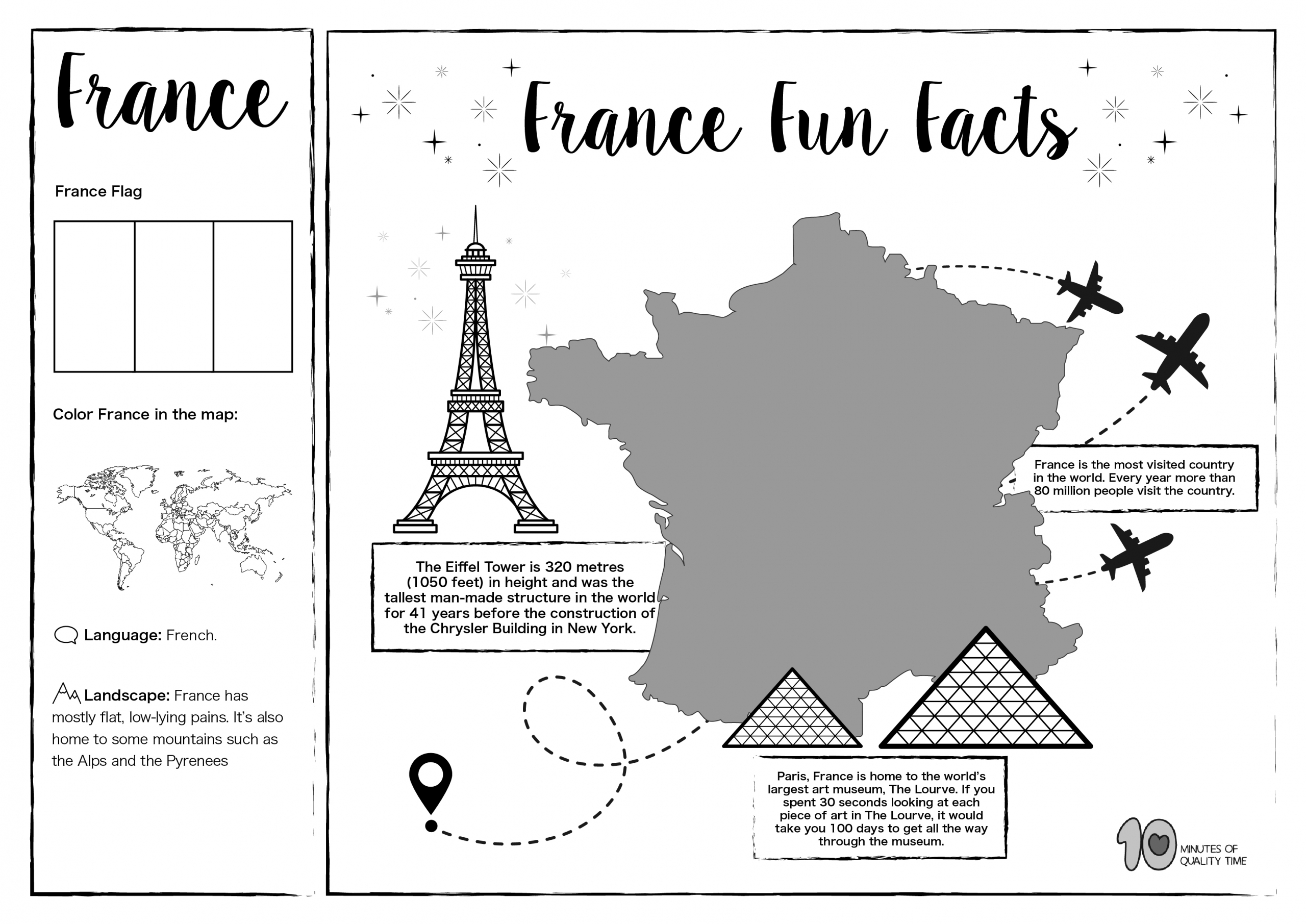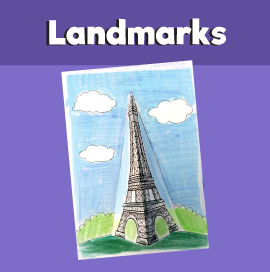France – Free Lesson Plan and Worksheets
Lesson
Grade Level: K-2 Activity Time: 15-20 Minutes
Materials
- France Brochure
- Pictures of Pointillism
- Paper (any size)
- Fine tipped markers
- Artist Label Worksheet
Introduction
Paris, France is home to The Louvre. The Louvre is the world’s largest art museum. The Louvre has more than 380,000 objects and displays 35,000 works of art. If you spent 30 seconds looking at each piece of art on display, it would take you more than 100 days to make it all the way through the museum. Of the 7,500 paintings in The Louvre, about 66% are by French artists.
One very famous French artist, Georges Seurat, invented a very famous type of art called pointillism. George Seurat came from a very wealthy family. They build him an art studio when he was a child, so he could devote his life to painting. He experimented in his art studio by placing very small dots of color close together on the canvas and the eye would mix them. Pointillism is essentially a picture where the colors are made up of very small dots. His most famous paintings are A Sunday Afternoon on the Island of La Grande Jatte (1884–1886) and Bathers at Asnières (1884). These paintings rely on the same idea that drives technology screen displays today. Computer screens, tvs, and tablets use arrangements of dots or squares and rectangles of basic colors. Our eyes work to blend the dots and see an image/color.
When you visit a museum, the artwork is labeled, so you know the name of the artist, when it was created, what was used to create the piece of art, and any other important information to help the viewer understand the artwork.
Ask children:
- Have you ever been to an art museum?
- What kind of art did you see?
- How did you know what the painting, sculpture, or object was of?
Activity
- Have students look at the examples of pointillism. Allow them to look at the pictures up close and ask them what they notice. Make a list of students’ observations.
- Give children a piece of paper. Have them draw inspiration from objects around the room, scenes from their lives, or objects in nature. Pointillism really isn’t about the subject matter, it’s about the technique, so paintings can be of any object students are interested in drawing.
- Encourage children to create a label for their artwork. Labels should include
-
- The artist’s name. This one is pretty straightforward!
- The title of the work. …
- The date of the artwork. …
- The size of the artwork. …
- The medium of the artwork
- Additional information. (The story told by the artwork or what inspired the artwork, for example)
- Have children share and describe their artwork with their peers.
- Tell a classmate about your pointillism piece
- What inspired your art?
- What was the hardest part about creating a pointillism piece?
- What did you like the best about pointillism?
- Hang art and labels around the classroom to create your very own museum.




